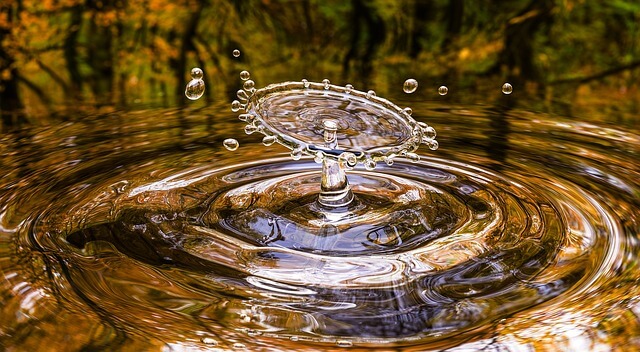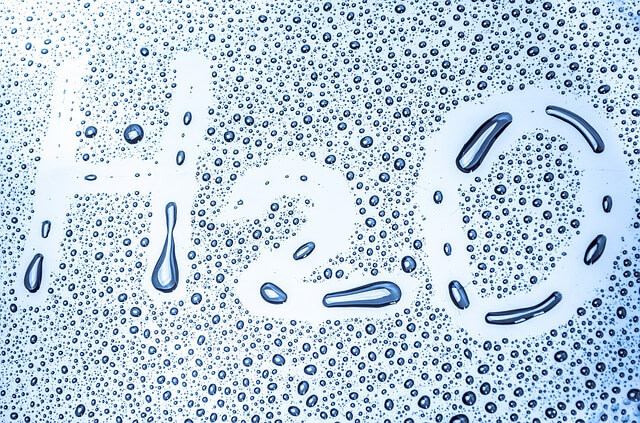Water is the simplest and most common substance on our planet. But at the same time, water is very mysterious. Scientists do not stop and continue to study water, finding more and more interesting data on it. Meanwhile, experts express worries about water pollution, which is very dangerous to people and to the environment.
Every year on March 22, the world celebrate the World Water Day. The United Nations General Assembly established this holiday to remind humanity of the importance of water resources for the environment and the development of society.
Water is the basis of life. All living creatures, animals and plants, consist of water: animals – by 75%, fish – by 75%, jellyfishes – by 99%, potatoes by 76%, apples by 85%, tomatoes by 90%, cucumbers by 95%, watermelons – by 96%. Even people consist of water. The newborn has 86% of water in the body and the elderly up to 50%.
Water not only gives life, but can also take it away. Water can transmit about 85% of all diseases in the world. Annually 25 million people die from these diseases.
Water currently covers about 70% of the territory of our planet. However, we can drink only 1% of this water. Every year, problems of access to water resources become more acute. Over the past 50 years, there have been as many as 507 conflicts in the world related to access to water. 21 disputes led to military action.
In addition, every year our water becomes more polluted, unsuitable for drinking and leading to various dangerous diseases.
Water pollution is a big problem in the modern world. Scientists do their best to explore diverse causes and consequences of this. Earth, once a “blue” planet, is losing fast this status, and H2O becomes a new gold. Meanwhile, in most cases, people create this enormous problem, polluting water and suffering from this.
Let us investigate 10 the most interesting facts about water pollution
- Water pollution kills about 10 thousand people every day, this is 3.6 million people a year;
- The United States faces a serious water problem too. Approximately 40% of all American rivers and 46% of lakes are too polluted for fishing and bathing. Each year, people throw more than 6 billion kilograms of garbage into the world ocean. Plastic takes one of the biggest or even the main part in the garbage, and for marine inhabitants it is toxic. At this rate, by 2025 three will be one ton of plastic for three tons of ocean inhabitants mostly in the surface water, and by 2050 the amount of plastic will exceed the number of fish;
- In India, the situation with water pollution is the worst in the world. The Indians used to throw approximately 80% of the waste into their sacred Ganges River. In its waters, poor Indians bury their dead. In India, a thousand children die every day because of diseases caused by poor quality drinking water. Meanwhile, every eight seconds a child, less than five years old, dies from diseases associated with poisoned water all over the globe;
- A large Pacific garbage dump is the “mainland” of plastic waste floating across the Pacific Ocean. According to some estimates, its territory exceeds the area of the USA by half. Ocean pollution is 80% from land-based sources – oil, pesticides, food waste, untreated sewage, industrial waste, etc.;
- Animals suffer too from water pollution. On April 12, Spanish scientists found 29 kilograms of plastic in the stomach of a dead sperm whale, which was carried by waves to the Spain coast;
- In China, 40% of water is polluted, and about 700 million people consume it on a regular basis;
- For the ocean ecosystem, oil is more harmful than garbage and other waste, and when transporting a million tons of oil, according to statistics, one ton is thrown into the water;
- Every year almost 5 million liters of oil enter the ocean, and only 12% is a consequence of leakage on tankers – the rest comes from land-based sources.
Awful disaster of Karachay lake in Russia
Radioactive contamination is a painful issue for the countries of the former USSR. In some regions, this is a real disaster. Karachay lake, in Chelyabinsk region is the most dirty and polluted place not only in Russia, but on the whole planet. The hour of stay in the lake is deadly to humans.In 2015, Lake Karachay was conserved due to the federal program “Ensuring Nuclear and Radiation Safety for 2008-2015”.
Therefore, the lake was completely covered with concrete blocks and rocky soil.Specialists insist that they have completely isolated the radioactive lake from the environment. Other researchers believe that the experts did not eliminate completely the danger.
However, Deputy Chief Process Engineer of Production Association “Mayak” Yuri Mokrov said that his employees strengthened the protection by several waterproofing layers. The enterprise stated that “during the first 10 months of monitoring after the closure of the Karachay water area, the specialists of the Mayak Production Association have recorded a clear decrease in radionuclide deposition to the surface, and the groundwater level of the reservoir is at regular level.”
Lake Karachay used to store radioactive waste since 1951. And once it was an ordinary lake, even in the XIX century it periodically dried up. It was not always marked on maps. When PA “Mayak” appeared near the lake Karachay, the heads of the enterprise decided to have fun and shot ducks at the shores of the lake.
After that Karachay became a storage facility, as almost 120 million curies of radioactive materials accumulated here. Experts say that there were mainly such dangerous radioactive elements, as cesium-137 and strontium-90.
Already in the 1960s experts understood that they must preserve the lake, as its level periodically decreased, and a real threat of penetration of radioactive aerosols into the air arose. Meanwhile strong winds started throwing deadly dust in the atmosphere and turned into radioactive tornadoes.
In 1971 the first works on backfilling started, nevertheless a large-scale backfill began only in 1986. Then the level of the lake started rising. Therefore it became clear that it was impossible to do just a filling. Specialists realized that it was necessary to completely conserve the lake.
At the end of 2015, the specialists made the last section of closing the lake with concrete blocks and rock soil. In spite of this, the radioactive lake itself has not gone anywhere. Its composition is truly deadly and caused terrible mutations. There were carps in Karachay without eyes and tails, and their scales grew not to the tail, as expected, but to the head.
However, the worst thing it’s not mutant fish. Scientists say that there is a danger that the radioactive waters migrate. Therefore, they can approach the water intakes of Chelyabinsk and other South Urals cities with a huge population.
Technology xperts argue that, despite the conservation, specialists have to continue monitoring Karachay. There is a system of wells, from where they want regularly testing water.
According to UNESCO, the cleanest water is in Finland. In total, 122 countries took part in the study of fresh natural water. At the same time, 1 billion people around the world do not have access to safe water at all.
It would seem that the main problem with water pollution on our green planet comes from the oil industry. Nevertheless, everyone can change the situation. If people start recycling more actively garbage, use less plastic, waste less water, then the situation will noticeably improve in the whole world. Even small acts have great influence. They can also make big changes for better for us all and for our dear planet.









poop on a stick




















